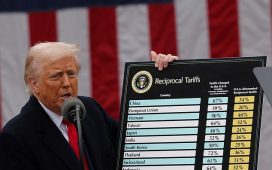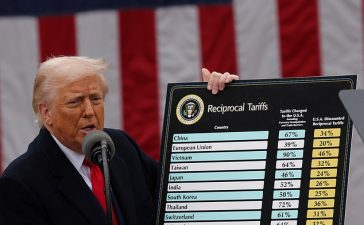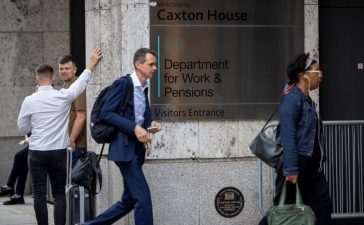Updated UK inflation figures are due on Wednesday May 22 and the forecast is for an annual rise of 2.7% for the Consumer Price Index (CPI), according to FactSet estimates.
Core inflation, which excludes volatile food and energy prices, is forecast to fall to 3.7%, from 4.2% in March.
CPI hit 11.1% in October 2022 and has fallen back sharply since. While energy prices have eased, there are still concerns over the price of food.
In a recent report, think tank Resolution Foundation says that 10 years of inflation was effectively squeezed into three years, forcing consumers to curtail spending.
James Smith, research director at the Resolution Foundation, said: “Next week headline inflation should finally return to normal levels, marking the end of the UK’s biggest inflation surge in more than four decades.
“The sheer scale of this near three-year inflation shock has reshaped the economy and public finances, and changed what people do with their money.
“The crisis has made us poorer, with the sharp rise in the cost of essentials hitting lower-income families hardest. It has also turned us from a nation of spenders to a nation of savers.”
While CPI fell to 3.2% in March, it is expected to fall in the coming months towards the 2% target, and even undershoot that, a prospect that seemed unlikely at the start of the year. But CPI is then expected to rise again as 2024 progresses, posing a dilemma for the Bank of England. Still, policymakers are keen to stress that one interest rate cut means that monetary policy is still restrictive – remember that the UK’s key interest rate has gone from 0.1% in December 2021 to 5.25% in August 2023.
When Will UK Interest Rates Fall?
Money markets assign a roughly 60% probability to the Bank of England cutting interest rates in June. But the Bank is keen to stress that the decision is still “data dependent”, with this week’s inflation numbers key. UK employment and wage data for March was stronger than expected.
The most recent Bank of England meeting on May 9 was, as expected, a “no change” meeting, with interest rates held at 5.25%. That said, there were obvious changes since the March meeting – one more member of the 9-strong monetary policy committee had voted for a cut. While the ratio of “no change” to “cut” votes is 7-2, more members are likely to join the cohort in favour of a reduction in the coming months.
“CPI inflation is expected to return to close to the 2% target in the near term, but to increase slightly in the second half of this year, to around 2½%, owing to the unwinding of energy-related base effects,” it said in the statement accompanying the May 2024 decision.
“There continue to be upside risks to the near-term inflation outlook from geopolitical factors, although developments in the Middle East have had a limited impact on oil prices so far.
“Conditioned on market interest rates and reflecting a margin of slack in the economy, CPI inflation is projected to be 1.9% in two years’ time and 1.6% in three years.”
Article written by James Gard, with charts by Sunniva Kolostyak









